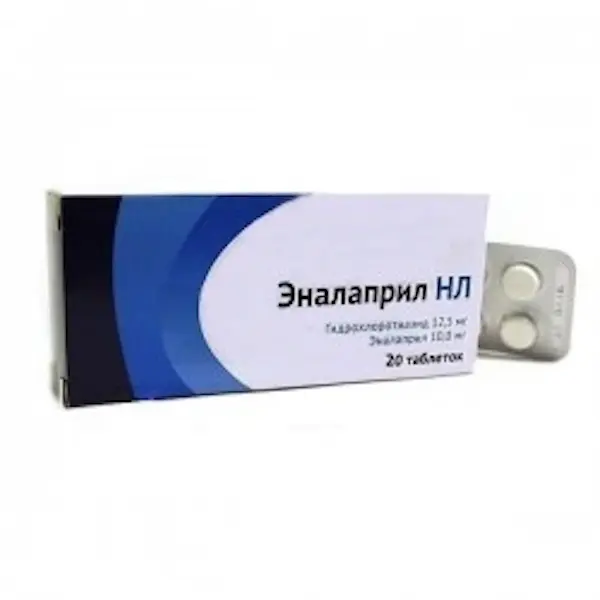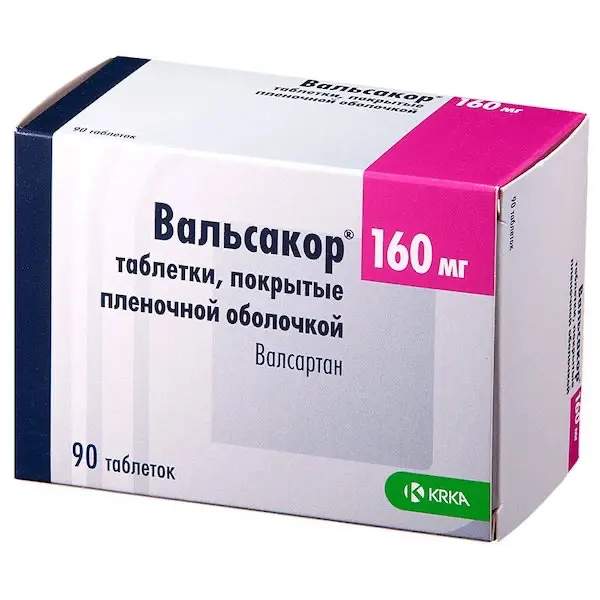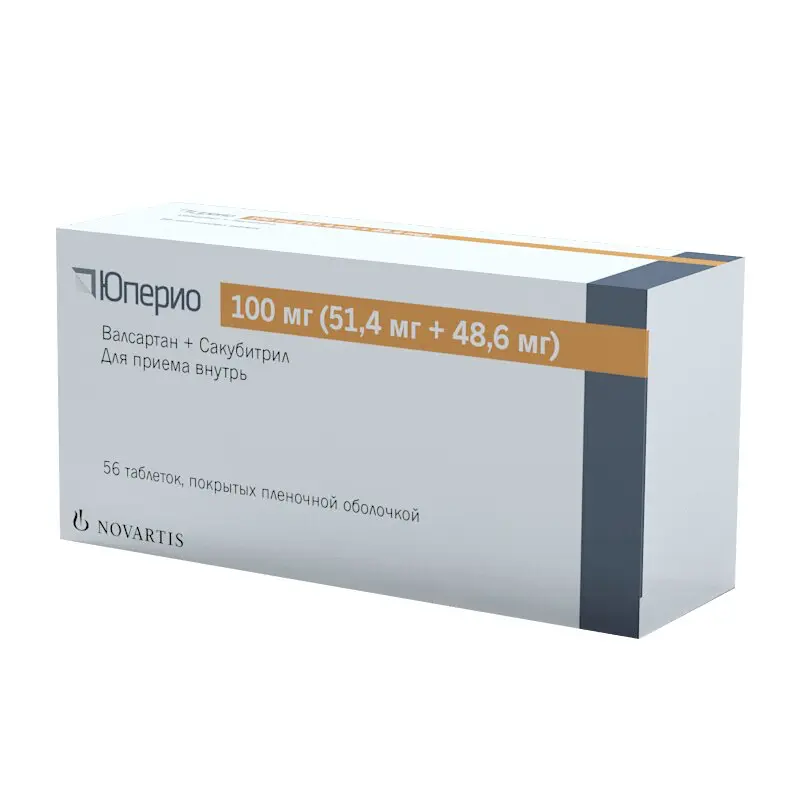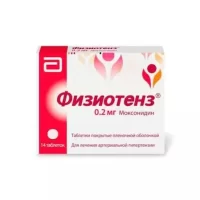Description
Enalapril NL Pharmacodynamics
Enalapril NL 20 is a combination of a diuretic (hydrochlorothiazide) and an ACE inhibitor (enalapril).
It is a combination drug, the action of which is due to the properties of the active substances in its composition. It has diuretic and antihypertensive effects.
Pharmacodynamics
Hydrochlorothiazide
Hydrochlorothiazide refers to the diuretics of thiazide series and has a diuretic effect by inhibiting sodium reabsorption in the distal convoluted renal tubules of the cortical layer of the kidneys. It enhances excretion of sodium and chlorine ions and, to a lesser extent, potassium and magnesium ions, increasing urine volume and contributing to lowering blood pressure (BP).
Diuretic effect occurs 2 hours after ingestion of hydrochlorothiazide, reaching a maximum after 4 hours and lasting 6 to 12 hours.
Enalapril
Enalapril is a derivative of two amino acids. L-alanine and L-proline. Enalapril is a prodrug: its hydrolysis results in enalaprilate, which is a highly specific and long-acting angiotensin-converting enzyme (ACE) inhibitor that contains no sulfhydryl group.
ACE (peptidyl dipeptidase A) catalyzes the conversion of angiotensin I to the pressor peptide angiotensin II. After absorption, enalapril is hydrolyzed to enalaprilate, which inhibits ACE. Its mechanism of action is related to the reduction of angiotensin II formation from angiotensin I, which results in increased plasma renin activity (due to the elimination of negative feedback in response to renin release) and decreased aldosterone release. ACE is identical to the enzyme kininase II, so enalapril can also block the degradation of bradykinin, a peptide with a marked vasodilatory effect. The significance of this effect in the therapeutic effect of enalapril needs to be clarified.
Despite the fact that the main mechanism of antihypertensive action of enalapril is considered to be inhibition of renin-angiotensin-aldosterone system (RAAS) activity, which plays an important role in blood pressure (BP) regulation, enalapril shows antihypertensive effect also in patients with decreased blood plasma renin activity.
Enalapril administration in patients with arterial hypertension leads to a decrease in BP in both standing and lying position without a significant increase in heart rate (HR).
Symptomatic postural hypotension develops infrequently. In some patients, it may take several weeks of therapy to achieve optimal BP reduction. Interruption of therapy with enalapril does not cause a sharp rise in BP.
Effective inhibition of ACE activity is usually observed 2-4 hours after a single oral dose of enalapril. Antihypertensive effect develops within 1 hour, the maximum BP reduction is observed 4-6 hours after oral administration. The duration of action depends on the dose taken. When using the recommended doses of enalapril, the antihypertensive effect and hemodynamic effects are maintained for 24 hours.
In clinical trials in patients with essential hypertension, a decrease in BP was accompanied by a decrease in total peripheral vascular resistance, an increase in cardiac output and no or little change in HR. After enalapril administration, an increase in renal blood flow was observed. The glomerular filtration rate did not change. No signs of sodium or fluid retention were observed during enalapril administration. However, in patients with initially decreased glomerular filtration its rate usually increased.
Hypotensive therapy with enalapril leads to significant regression of left ventricular hypertrophy and preservation of systolic function.
Enalapril therapy is accompanied by favorable effects on plasma lipoprotein fraction ratios and no or favorable effects on serum total cholesterol concentrations.
Combination of hydrochlorothiazide and enalapril
In clinical studies it has been shown that the use of a combination of hydrochlorothiazide and enalapril leads to a more pronounced decrease in BP compared to monotherapy of each of the drugs separately and allows to maintain the antihypertensive effect of Enalapril NL 20 for at least 24 hours.
Enalapril reduces the loss of potassium ions due to the use of hydrochlorothiazide.
- Orally.
- Enalapril NL 20 should be taken regularly at the same time, preferably in the morning, regardless of meal time, without chewing, with small amount of liquid, 1 time per day. The recommended dose is 1 tablet per day. If necessary, the dose may be increased to a maximum daily dose of 2 tablets per day.
- At the beginning of Enalapril NL 20 therapy symptomatic arterial hypotension may develop, which occurs more often in patients with water-electrolyte balance disorders (including those due to previous therapy with diuretics, diarrhea and/or vomiting), in patients with severe heart failure, severe arterial hypertension, renovascular hypertension. The above patients should be monitored for 8 hours after the first dose of the drug. Diuretics should be discontinued 2-3 days before starting therapy with Enalapril NL 20.
- Renal function should be assessed before starting treatment. The duration of treatment is determined by the physician.
- Administration in patients with renal dysfunction
- In patients with renal insufficiency with CK 30-80 ml/min the preparation should be used only after prior titration of enalapril and hydrochlorothiazide doses separately, according to the doses in Enalapril NL 20 combination preparation.
- In patients with renal insufficiency (CK greater than 30 mL/min but less than 80 mL/min), the recommended starting dose of enalapril when used in monotherapy is 5 to 10 mg.
- Enalapril NL 20 is contraindicated in patients with severe renal insufficiency (CKR less than 30 ml/min).
- Administration in elderly patients
- Clinical studies of efficacy and safety of concomitant use of enalapril and hydrochlorothiazide were similar in elderly (over 65 years) and younger patients with arterial hypertension. The initial dose of Enalapril NL 20 is not required for elderly patients.





